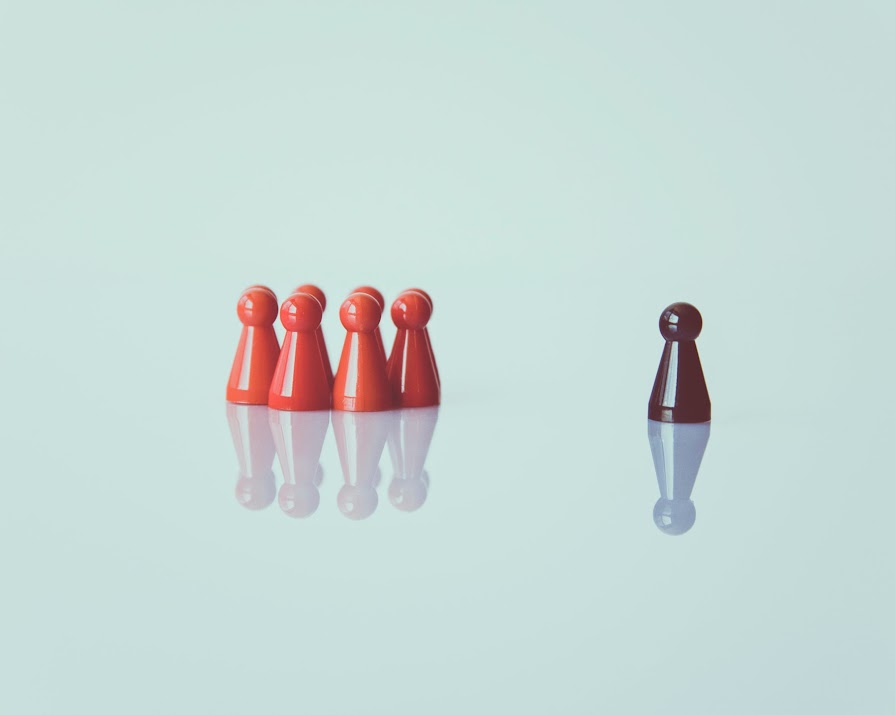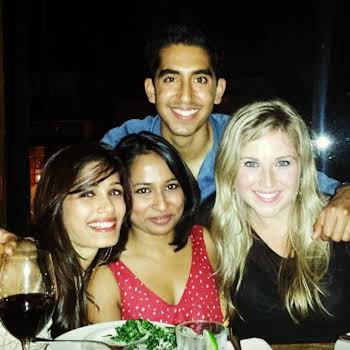Tackling the bystander effect: What to do when you witness racism
By Lauren Heskin
11th Nov 2020
11th Nov 2020
Witnessing an incident of racism can often leave many people stuck, unsure of what to do or how best to act. The Irish Network Against Racism outlines why intervention is so important and how to do so safely.
Many of us imagine incidents of racial abuse are few and far between in Ireland, and those that do exist are mostly late-night scuffles where alcohol and bravado are involved.
However, statistics from the Irish Network Against Racism’s (INAR) iReport.ie system, which asks people to report incidents of racism, proves that most racist incidents in Ireland happen during the day, while people are on their lunch break or on their way home to and from work. They’re also on the rise in Ireland. 2019 saw 530 incidents reported, compared to 390 in 2018.
As well as tackling racism itself, INAR also wants to deal with the insidious silence that often surrounds these incidents. Claudia Horeau, Kenyan Irish Creole anti-racism advocate and speaker and INAR board member, noted that her own experience of racism in Ireland has been “vastly diminished” by the action of a white bystander.
To deal with this issue of inaction, INAR has created a guide on what to do as a bystander to racism. It outlines a number of ways for bystanders to handle racists incidents that can help to deescalate the situation and make the victim feel safe.
Fighting the Bystander Effect
The bystander effect is a psychological theory that says the more bystanders there are, the less likely an individual is to help a victim. It seems that shared responsibility makes people feel less individually responsible and therefore less likely to act. People feel that others might intervene or they feel frozen and unsure of what to do in front of onlookers.
However, the bystander effect is a dangerous precedent to accept. It not also makes the harassed person feel unsafe at that moment, but also within the wider community more long-term. It sows seeds of doubt and mistrust and encourages a feeling of “us versus them”. It can also give the perpetrator a sense of silent consent, bolstering their attitude and makes them likely to repeat their actions. Safe and considered action is essential.
The INAR outline that there is no perfect way to react in this scenario. The aim of their guide is to give you a range of options to choose from and prevent bystanders from freezing up with indecision.

Illustration via INAR
Ways to Intervene
INAR outlines nine ways to intervene when you witness an incident of racism that vary in risk.
If you do not feel at all safe in the situation and do not feel comfortable intervening, for either your own safety or the victim’s, you can delegate it to someone in a position of power. If you’re on public transport, you can alert the driver or security staff. If you’re on the street you can contact the Gardaí.
If there isn’t a figure of authority on hand, engage a peer. Don’t forget that the bystander effect can be countered by drawing people directly. Maybe someone is also watching the situation and unsure of what to do too. Try and catch their eye and see if this might be something you could intervene together on.
If you require help from a bystander, INAR recommends identifying them specifically, for example, “excuse me, lady in the red jumper, can you help?”. This will encourage them into action and feel more personally responsible.
If you’re not sure how you might intervene, your first step should be to let the victim know you’re there and you can see what’s happening. Make eye contact or move to sit beside them. Anything that will alert them that they are not alone.
Distraction is another tactic that INAR suggests. This doesn’t have to be anything excessive, simply pretending to have a loud phone call or dropping something on the floor can be enough to remind the perpetrator that other people are watching.
Document the incident. Filming and photographs can be a useful tool when it comes to prosecuting a perpetrator after the fact. Ensure you keep a safe distance and never put the video online without the permission of the harassed person.
Your final and the riskiest option is to intervene directly. This can lead to a possible escalation so tread very carefully. Speak calmly and clearly and ask them to leave the person alone.
If you felt immobilised by an incident of racism or weren’t sure what to do in the moment, you can still act afterwards. Ask the harassed person if they’re okay, do they need anything, help getting home or contacting a friend or authorities. Act as a witness by offering to give a description of events to the Gardaí and try to remember specific details about the perpetrator that could help in prosecuting him.
Finally, INAR would like you to report incidents of racist behaviour you witness to their iReport.ie system where they can get a clear statistical picture of what racism in Ireland looks like, as well as aiding authorities in prosecutions.
Tips
- The key to any scenario is to remain calm. Aggression or confrontation can often only serve to escalate the situation.
- INAR also recommends that you not engage with the aggressor at all and instead focus on the victim. Make them feel supported. If you have to engage with the aggressor it’s best to focus on their language and attitude rather than the person. Calling them a racist might only agitate them further.
- Your actions, no matter how small, something as simple as sitting next to someone, can have an outsized impact on their feelings about the encounter.
You can read INAR’s complete guide on responding to racism here.
This article is part of a committed partnership between IMAGE and The Irish Network Against Racism (INAR). Each month IMAGE will work with INAR to shine a light on a person or project that is celebrating and promoting diversity and equality in Irish life.
Featured image: Markus Spiske on Unsplash
Read more: Racism in Ireland is on the rise, but are we still listening?
Read more: ‘We live here. We work here. We belong here’: Groundbreaking research unveiled for undocumented in Ireland
Read more: The Yellow Flag schools programme tackles systemic racism at the root























